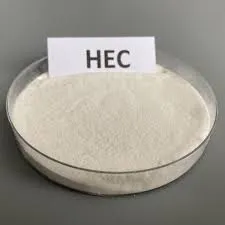
sep . 10, 2024 12:47 Back to list
RDP Powder Price Analysis - Current Market Trends & Insights
Understanding RDP Powder Prices Trends, Factors, and Future Outlook
In the realm of industrial materials, Redispersible Polymer Powder (RDP) has gained significant importance, particularly in the construction and adhesive industries. This white powder, derived from aqueous dispersions of polymers like vinyl acetate, ethylene, and styrene-acrylic, enhances the performance of cement-based products, making them more versatile and effective. As the demand for RDP continues to grow, understanding its pricing dynamics becomes essential for manufacturers, suppliers, and end-users alike.
Current Pricing Trends
As of late 2023, RDP powder prices have been subject to fluctuations influenced by several global and regional factors. On average, prices for RDP powder have been observed to range from $3,000 to $5,000 per metric ton. These prices can vary significantly based on purity levels, production techniques, and sourcing regions. For instance, higher-grade RDP powders, which offer superior performance in construction applications, often command a premium price due to their enhanced properties such as improved adhesion, flexibility, and resistance to water.
Key Factors Influencing RDP Powder Prices
1. Raw Material Costs The primary components of RDP are sourced from petrochemical derivatives, which are subject to price volatility due to oil market fluctuations. Recent geopolitical tensions and supply chain disruptions have further impacted these costs, leading to sporadic price increases for RDP.
2. Demand from End-Use Industries The construction industry is the largest consumer of RDP powders. As the global economy continues to recover post-pandemic, demand in this sector has surged, particularly in emerging markets like India and Southeast Asia. The growth in residential and commercial construction projects has led to a corresponding increase in the demand for high-quality RDP, thereby putting upward pressure on prices.
rdp powder price

3. Technological Advancements Innovations in polymer chemistry have led to the development of more efficient production processes and higher-performance RDP preparations. These advancements can influence market pricing, as new formulations may come with higher initial costs, albeit with the promise of improved performance and cost-effectiveness in the long run.
4. Environmental Regulations With a global shift towards sustainability, manufacturers are increasingly focusing on eco-friendly production methods. Compliance with stringent environmental regulations can incur additional costs, which may be passed down to consumers in the form of higher RDP powder prices.
Future Outlook
Looking ahead, the trajectory of RDP powder prices is likely to be driven by a combination of continued demand growth and raw material availability. Analysts predict that while short-term price volatility may persist, the long-term outlook remains positive, with expected price stabilization as production capacities expand.
Furthermore, as manufacturers invest in sustainable practices and the development of bio-based materials, the landscape of RDP production may shift. This transition could lead to new pricing structures, appealing to a market increasingly conscious of environmentally friendly practices.
In conclusion, RDP powder prices reflect a complex interplay of global market dynamics, demand from construction and adhesive sectors, and evolving production technologies. Stakeholders must stay attuned to these trends and factors to navigate the challenges and opportunities presented in this vital segment of the industrial materials market. As the industry evolves, those who adapt and innovate will be best positioned to thrive in the competitive landscape of RDP powders.
-
Versatile Hpmc Uses in Different Industries
NewsJun.19,2025
-
Redispersible Powder's Role in Enhancing Durability of Construction Products
NewsJun.19,2025
-
Hydroxyethyl Cellulose Applications Driving Green Industrial Processes
NewsJun.19,2025
-
Exploring Different Redispersible Polymer Powder
NewsJun.19,2025
-
Choosing the Right Mortar Bonding Agent
NewsJun.19,2025
-
Applications and Significance of China Hpmc in Modern Industries
NewsJun.19,2025







